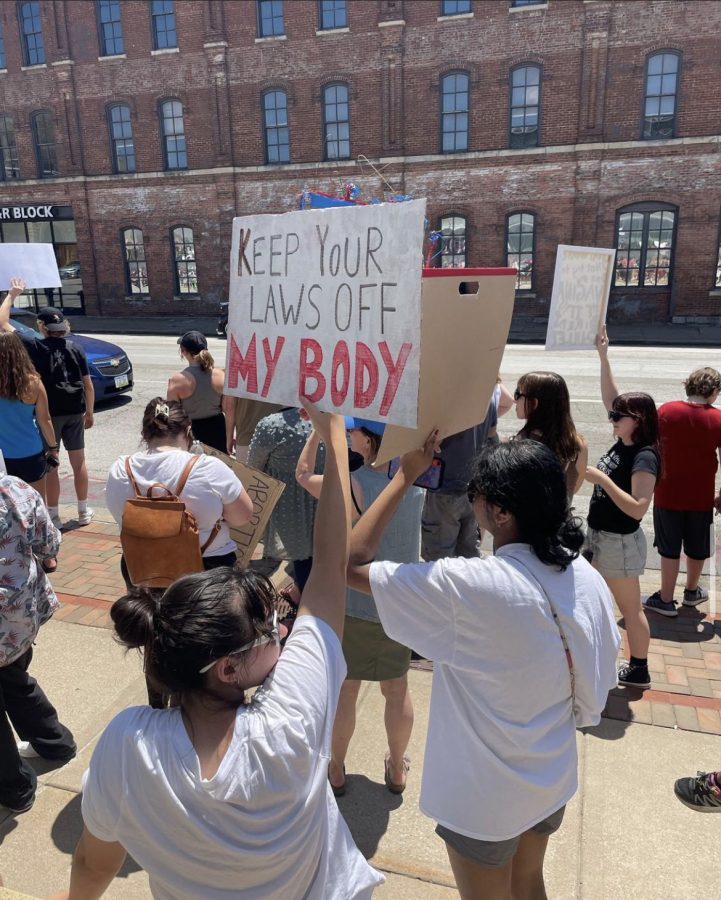“Stay woke.”
A phrase that originated to encourage vigilance against police brutality and racial injustice has become the subject of recent debate, further deepening the political divide.
The term “woke” was popularized in the aftermath of the killing of Michael Brown in Ferguson, Missouri. Being “woke” meant understanding how America’s institutions operate and recognizing systemic racism within them.
Although the term “woke” has only recently become a part of the general public’s vernacular, it has been around for decades. The earliest uses of the term “woke” can be traced back to 1938 when it was first used by blues musician Huddie Ledbetter, better known as Lead Belly. In his protest song “Scottsboro Boys,” Ledbetter says, “So I advise everybody/be a little careful when they go along through there/ best stay woke/keep their eyes open.”
For the next several decades, “woke” was adopted into the dialect of the African American population and grew to be appropriated by white hipsters in the 60s, who were ironically “woke” for condemning the appropriation of Black culture.
“Wokeness” has been around for as long as political activism. But what were once protests and boycotts are now Twitter feuds and cancel culture. “Wokeness” has taken on an entirely new meaning.
“Woke” evolved to be considered a one-word encapsulation of the left’s ideology, representing awareness about pressing issues related to social justice and critical race theory. The term has been weaponized by the right, used ironically as an insult directed at overzealous leftists. No longer a term of aspiration, “woke” has simultaneously become a one-word degradation of leftist ideology.
The term “woke” has long been associated with the left, but in recent years, it has grown to become increasingly problematic. By putting the emphasis on appearances rather than quantifiable change, “wokeness” doesn’t inspire action; it freezes it. This is evident through companies’ mission statements and influential figures that are constantly engaging in performative activism to appear “woke.”
Senior Nora Zimmermann has noticed “wokeness” stunting real progress. “Because the hollow discourse and virtue signaling overtake the strife for progress, motivation to actually change becomes fear of being canceled. Instead of semantics for the sake of appearances, we need to have relevant conversations that accomplish growth even on small scales,” she said.
Growing desperation towards appearing “woke” is evident through “activist ads.” This phenomenon, coined “faux woke,” has been used by marketing teams to foster brand loyalty. Often depicting liberal values and anti-Trump messages, these ad campaigns are successfully enticing a growing demographic: their young, impressionable, “woke” audience. By associating themselves with social movements, these brands are able to garner the support of future markets, which are becoming increasingly progressive.
A 2017 Pepsi ad featured television personality Kendal Jenner bringing peace to a protest scene by offering a can of Pepsi to a police officer on the sidelines. Torn apart by critics on social media, this ad is a representation of everything wrong with the modern definition of “wokeness.” With performative activism taking over the current “woke” movement, it has grown to bear little connection to its original meaning.
Ads like this one leave a bad taste in the viewers’ mouths, causing them to ask, “Do these companies really care about social activism?”
“Advertising ‘holier than thou’ attitudes may be profitable, but consumers need not purchase their entire political philosophy from a corporation,” Zimmermann continued.
In a climate where social justice and racial equality are still yet to be achieved, it is no surprise that “wokeness” has taken root in modern society. Tweeting at Elon Musk, “canceling” Ivanka Trump’s clothing line or supporting a brand that aligns with personal ideology may feel like an actionable change— but in reality, it’s just the modern “woke” movement going to work.










